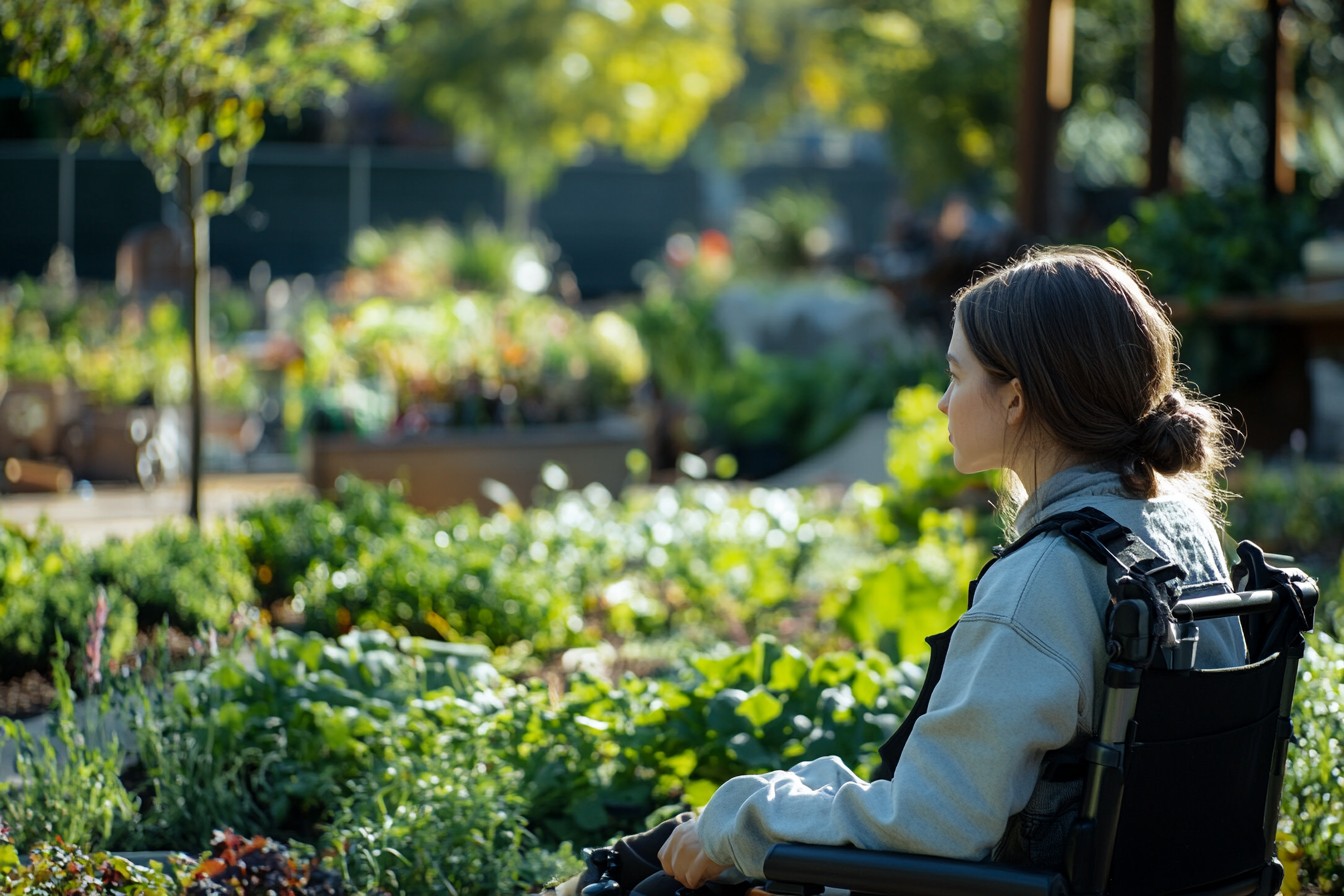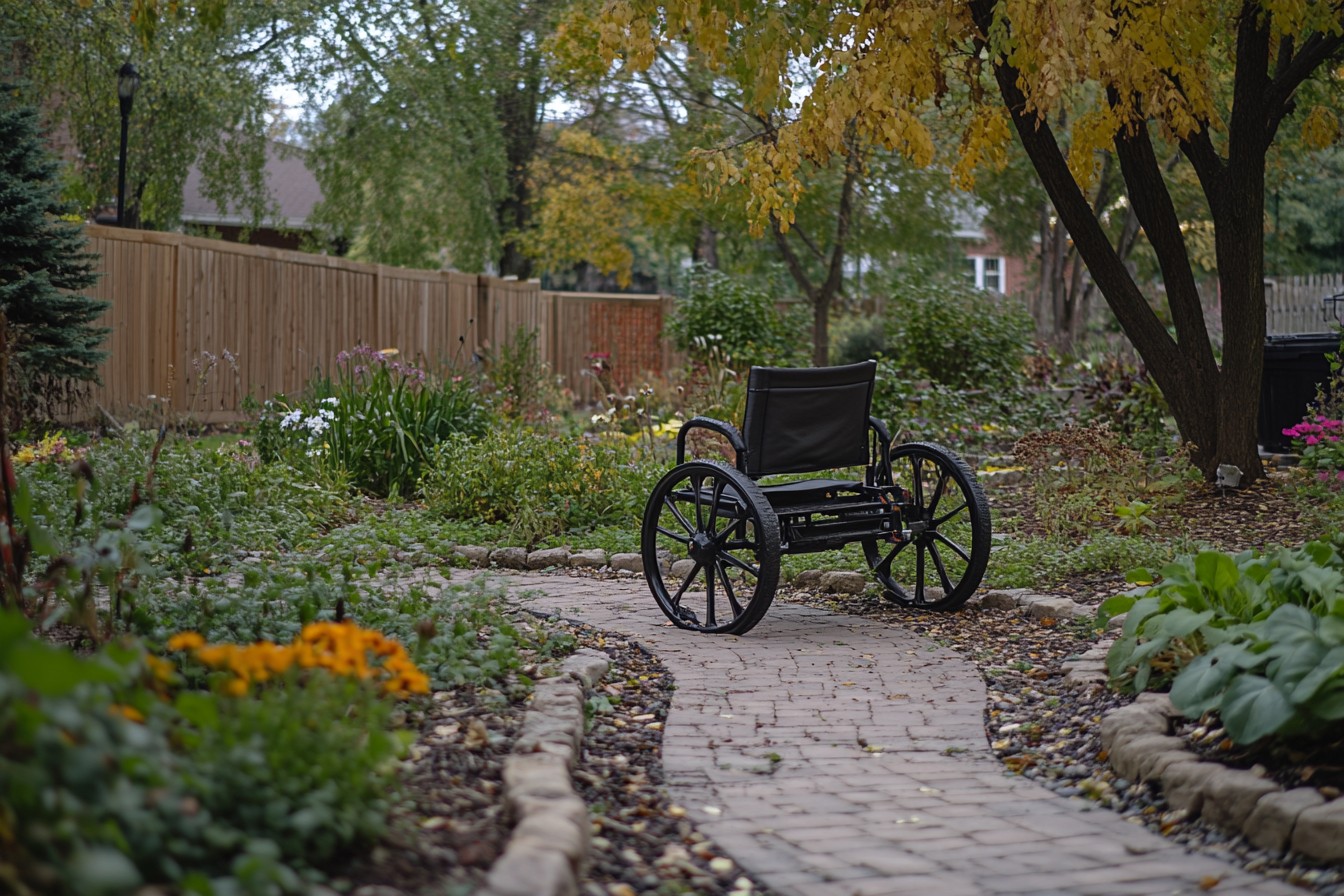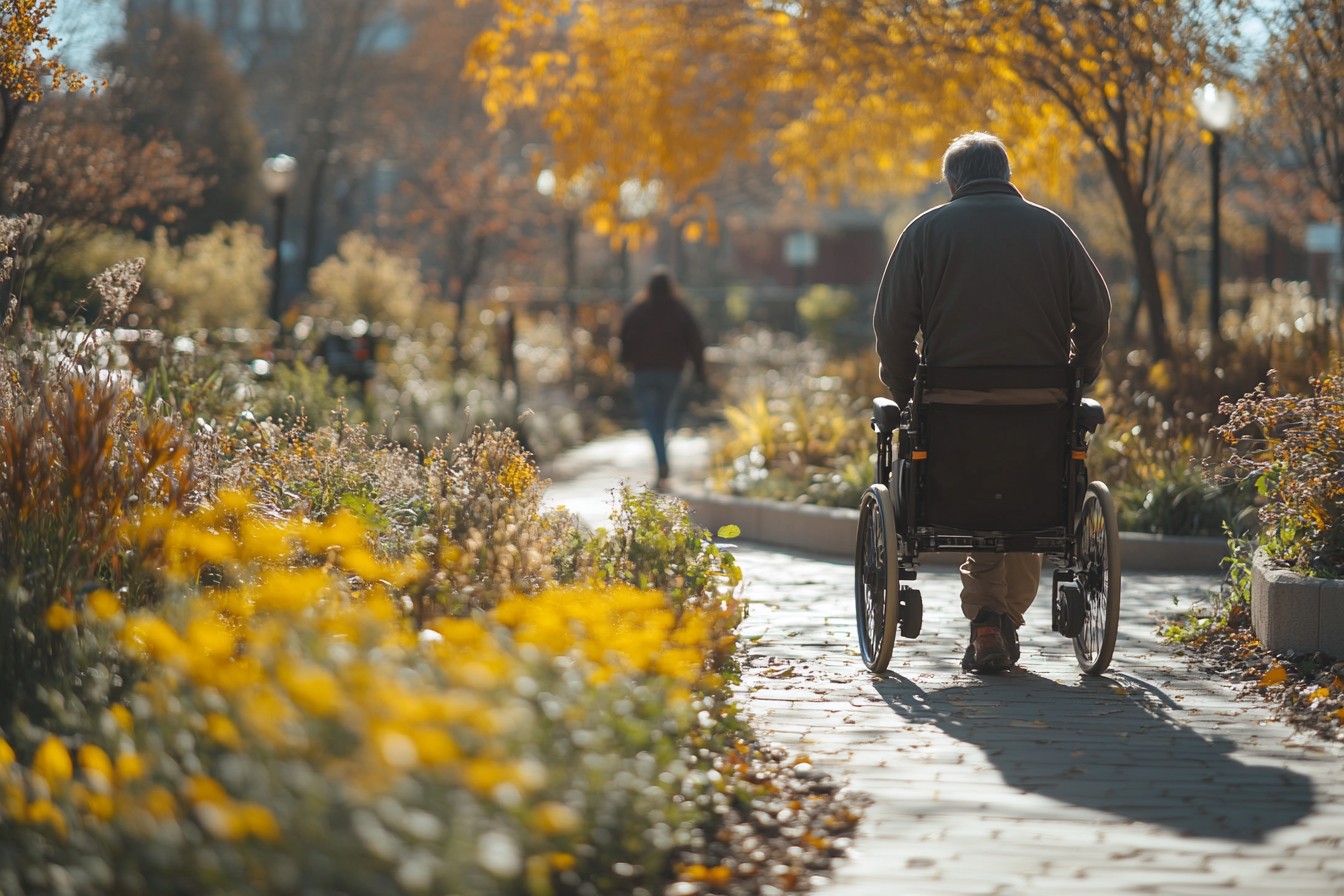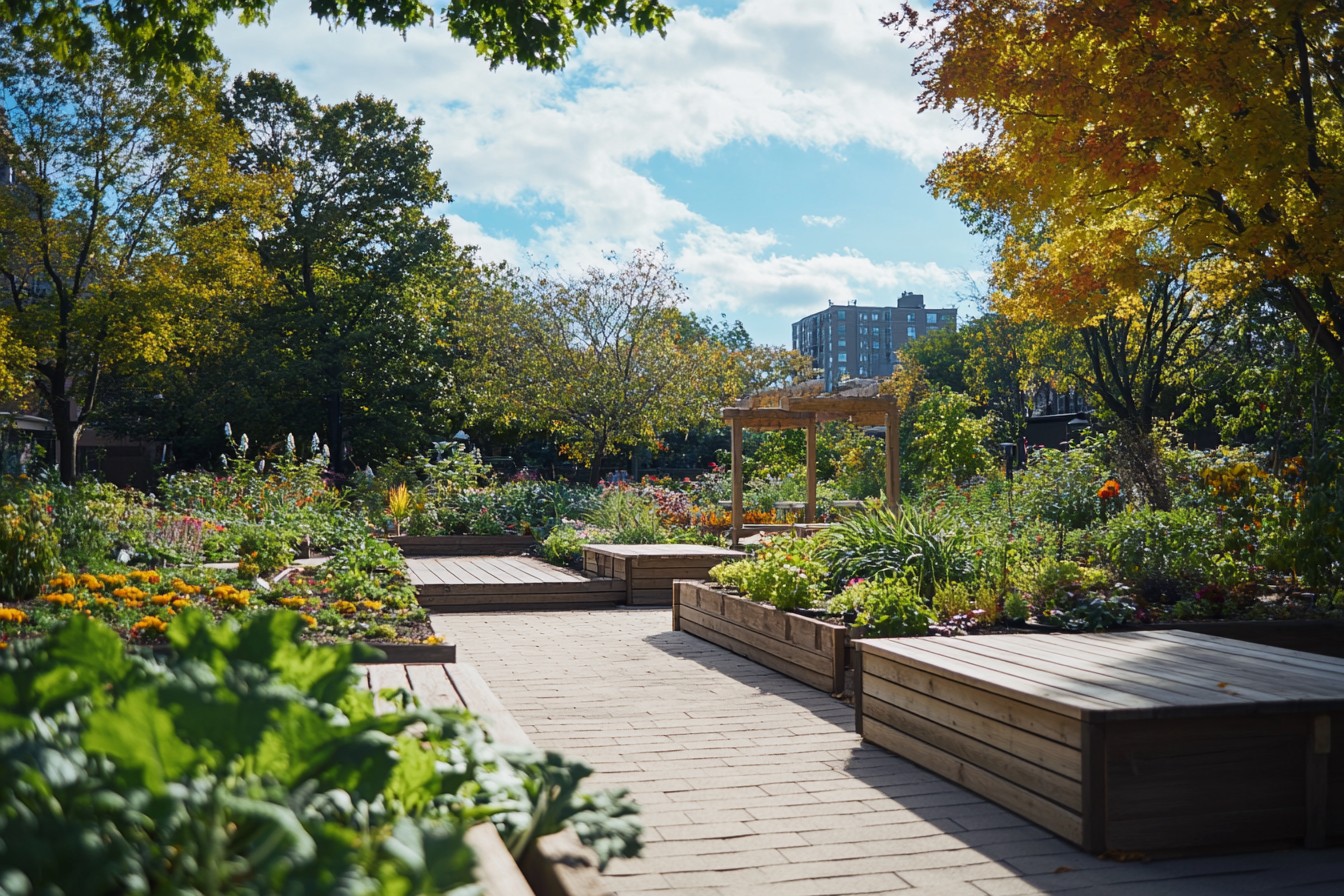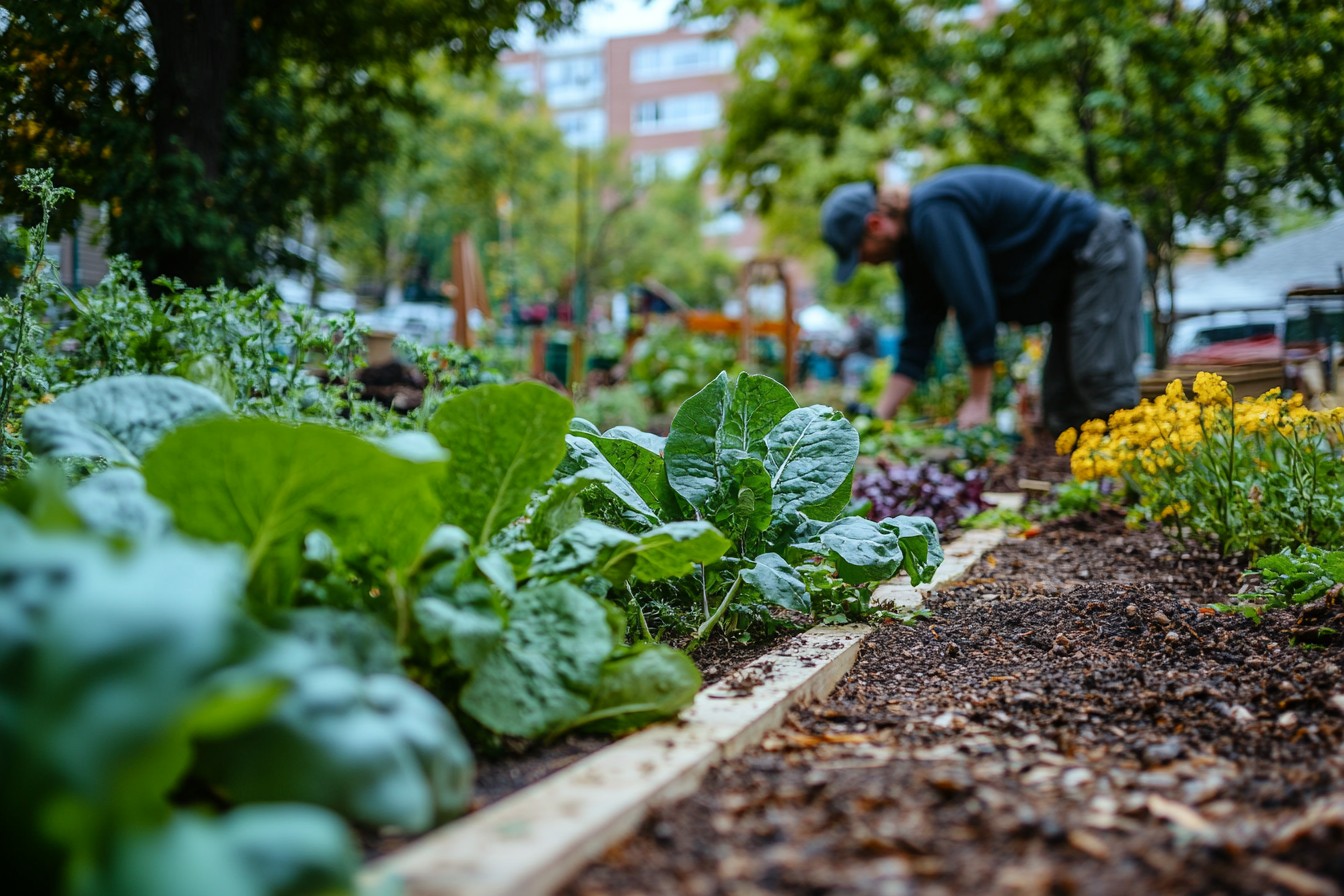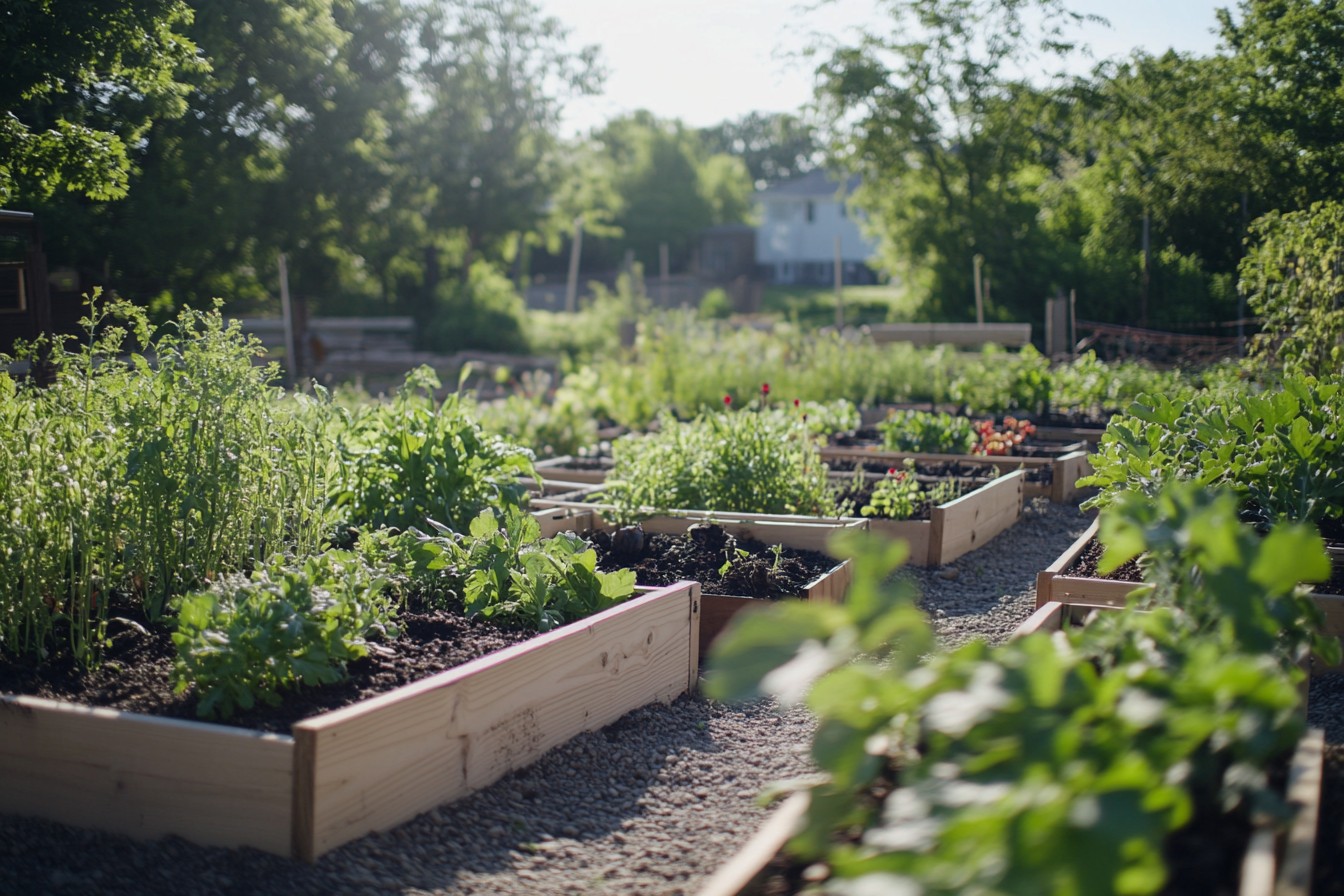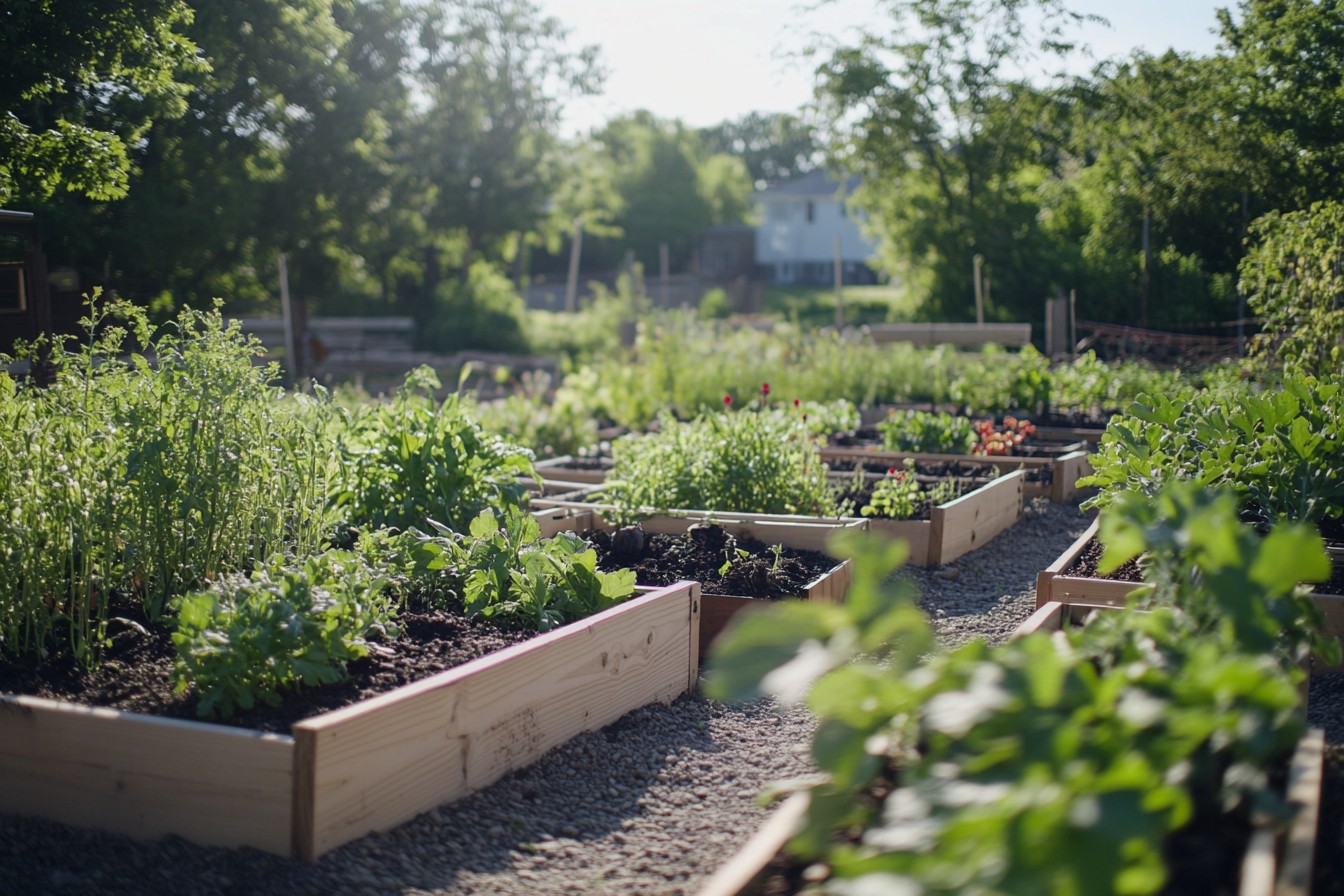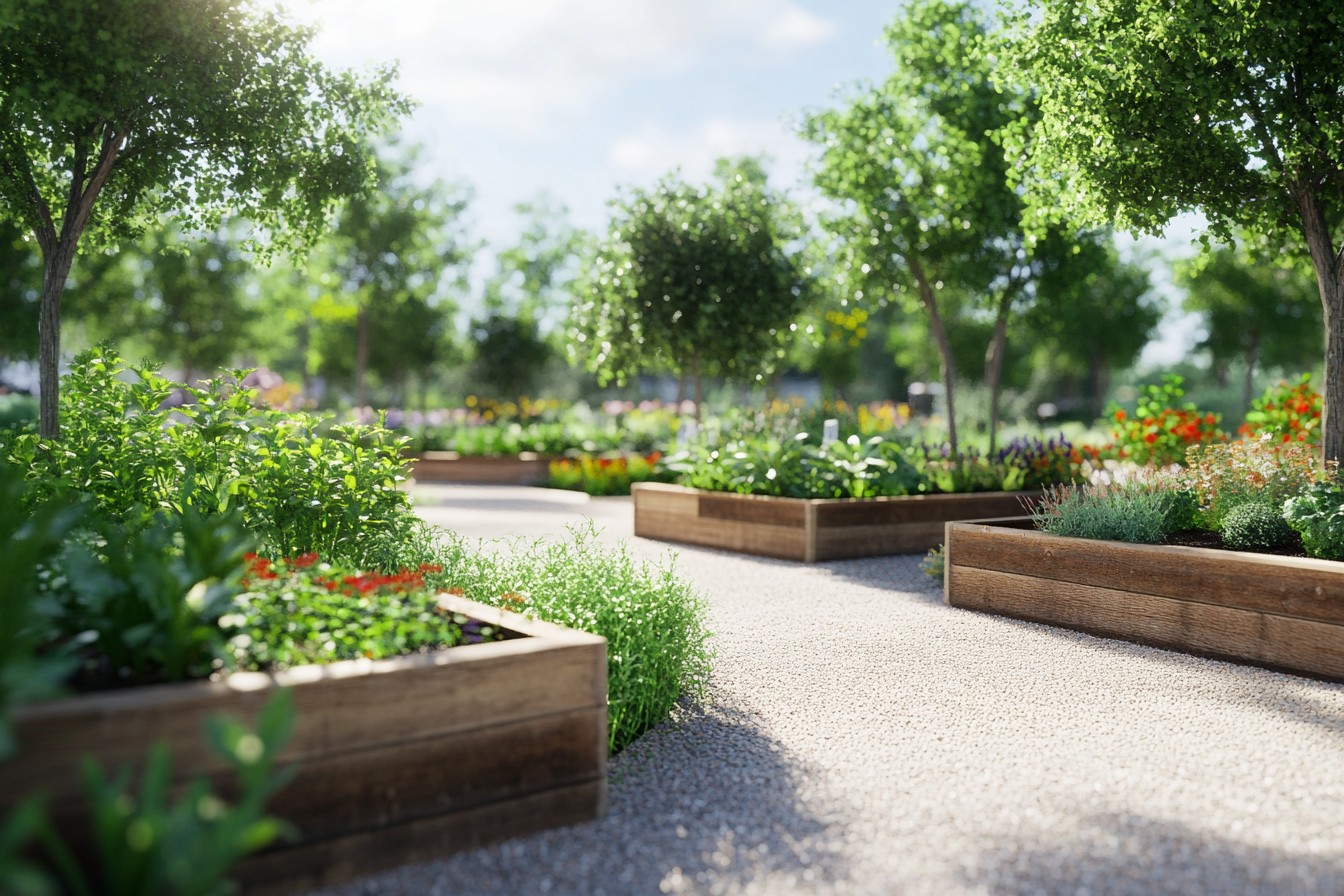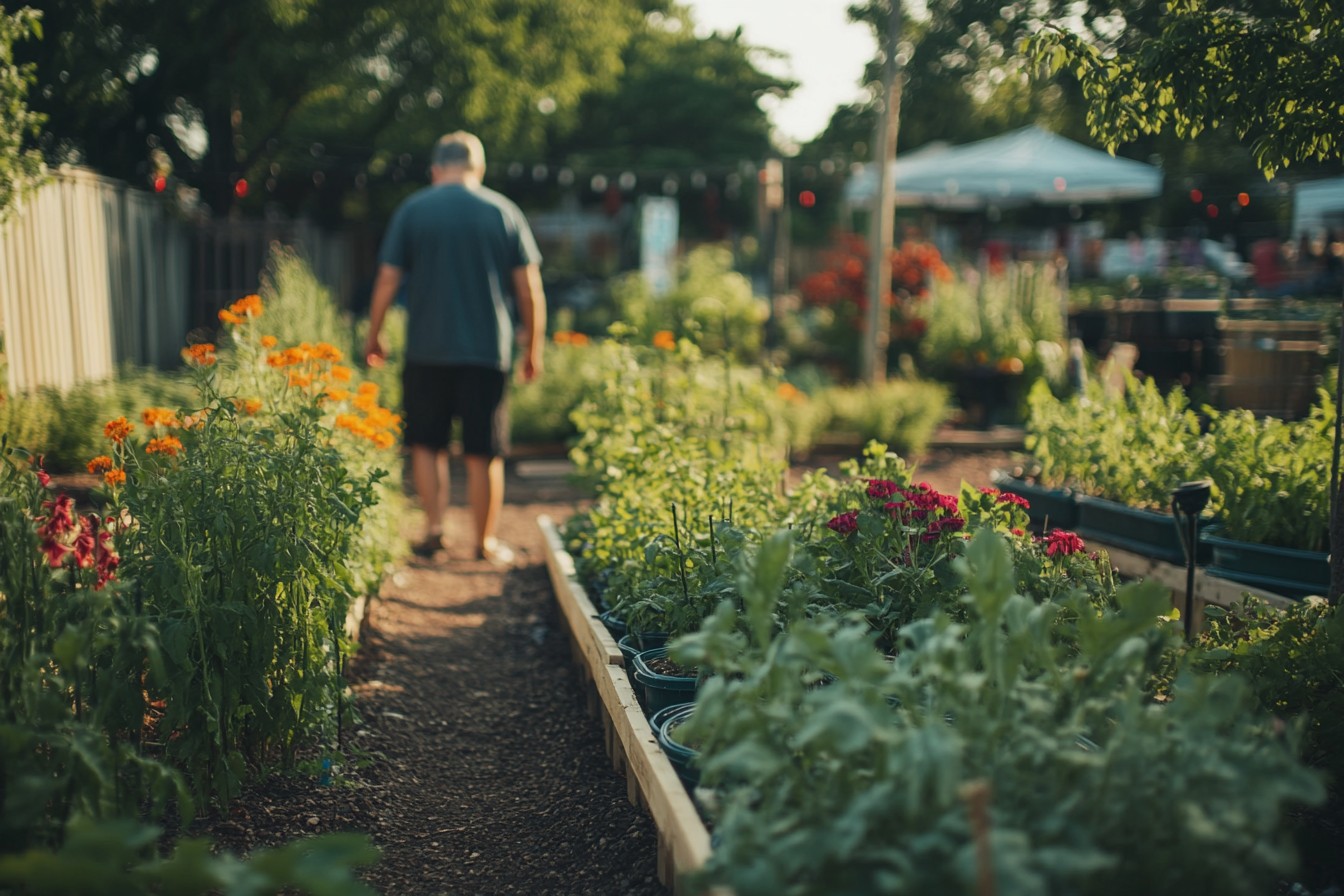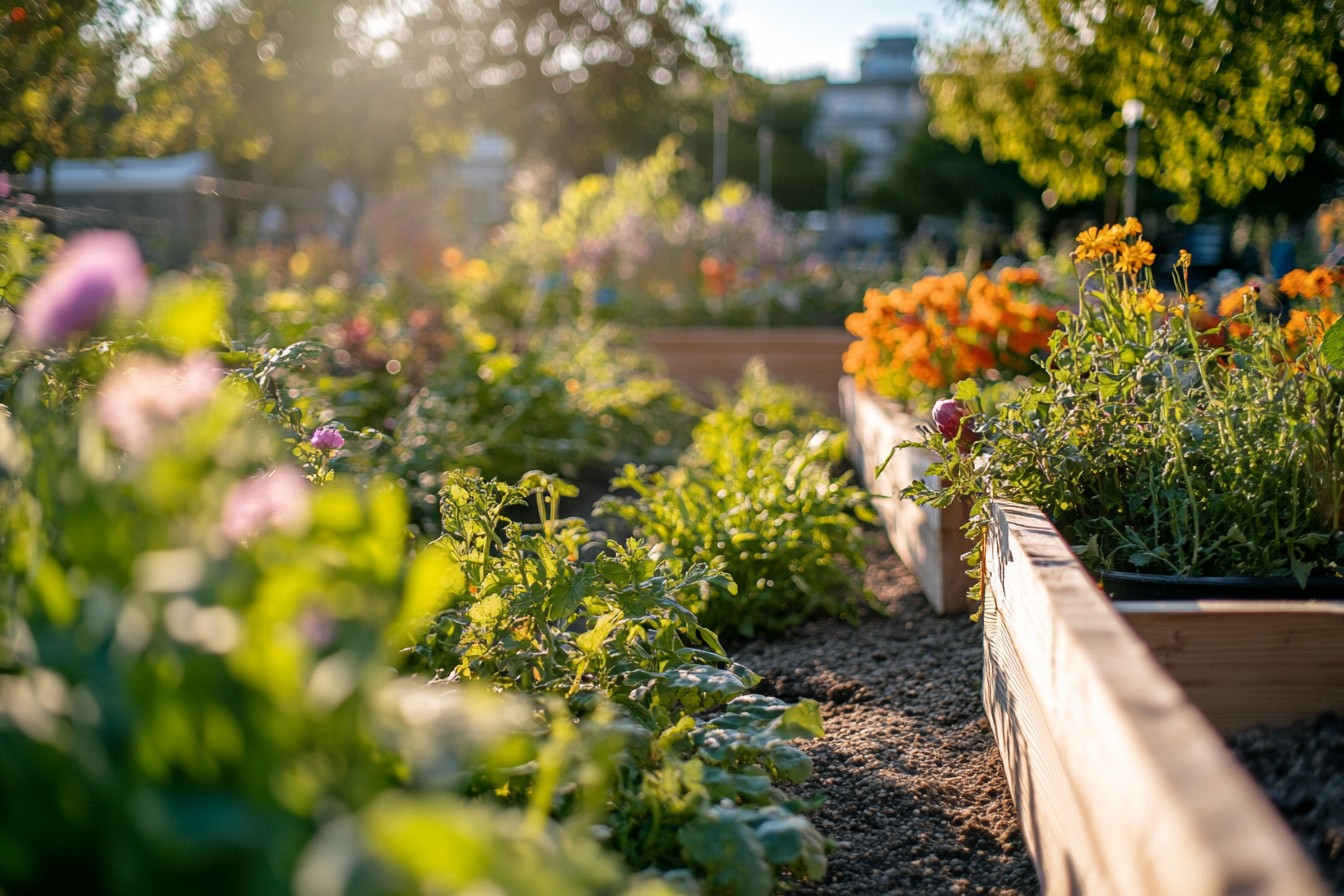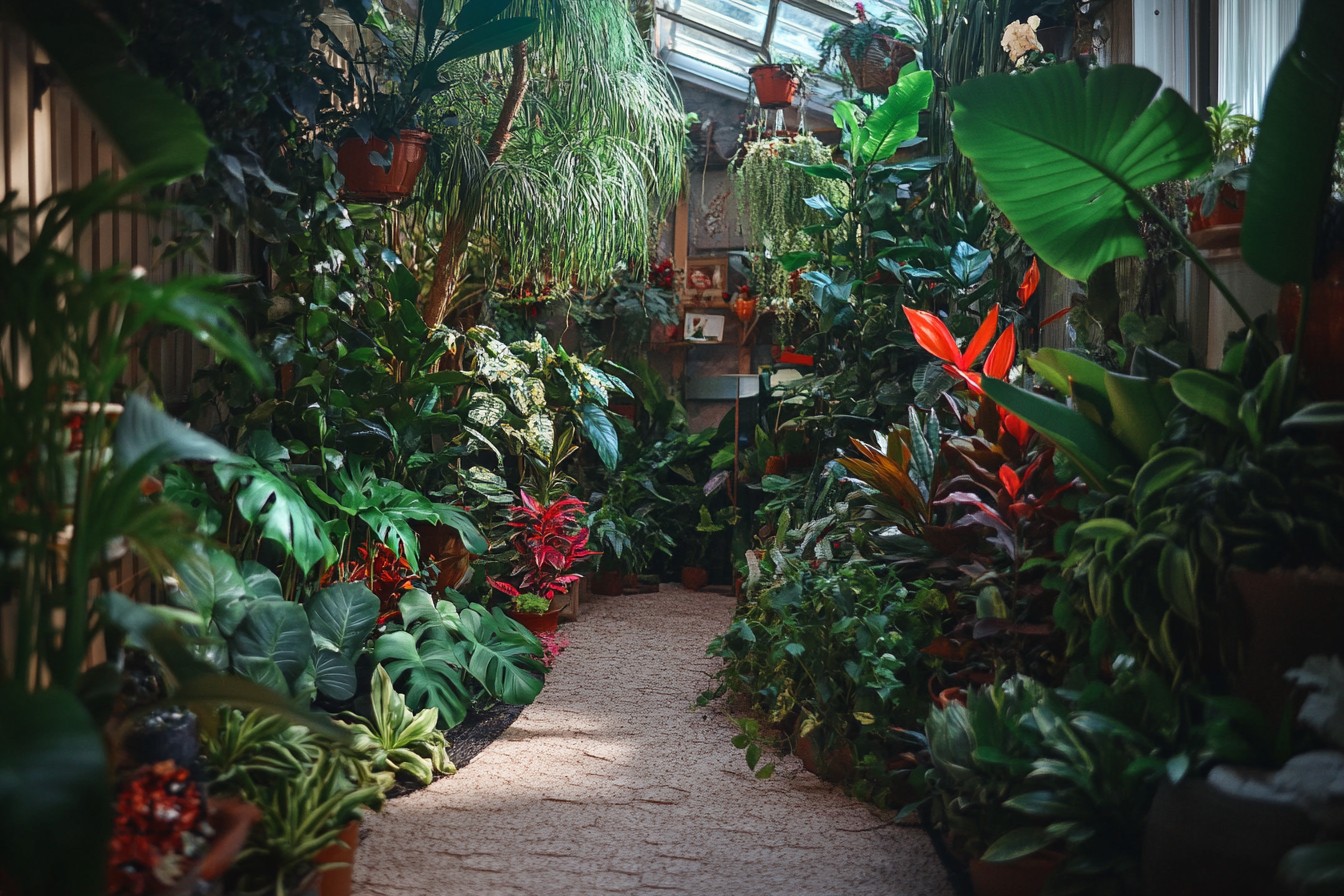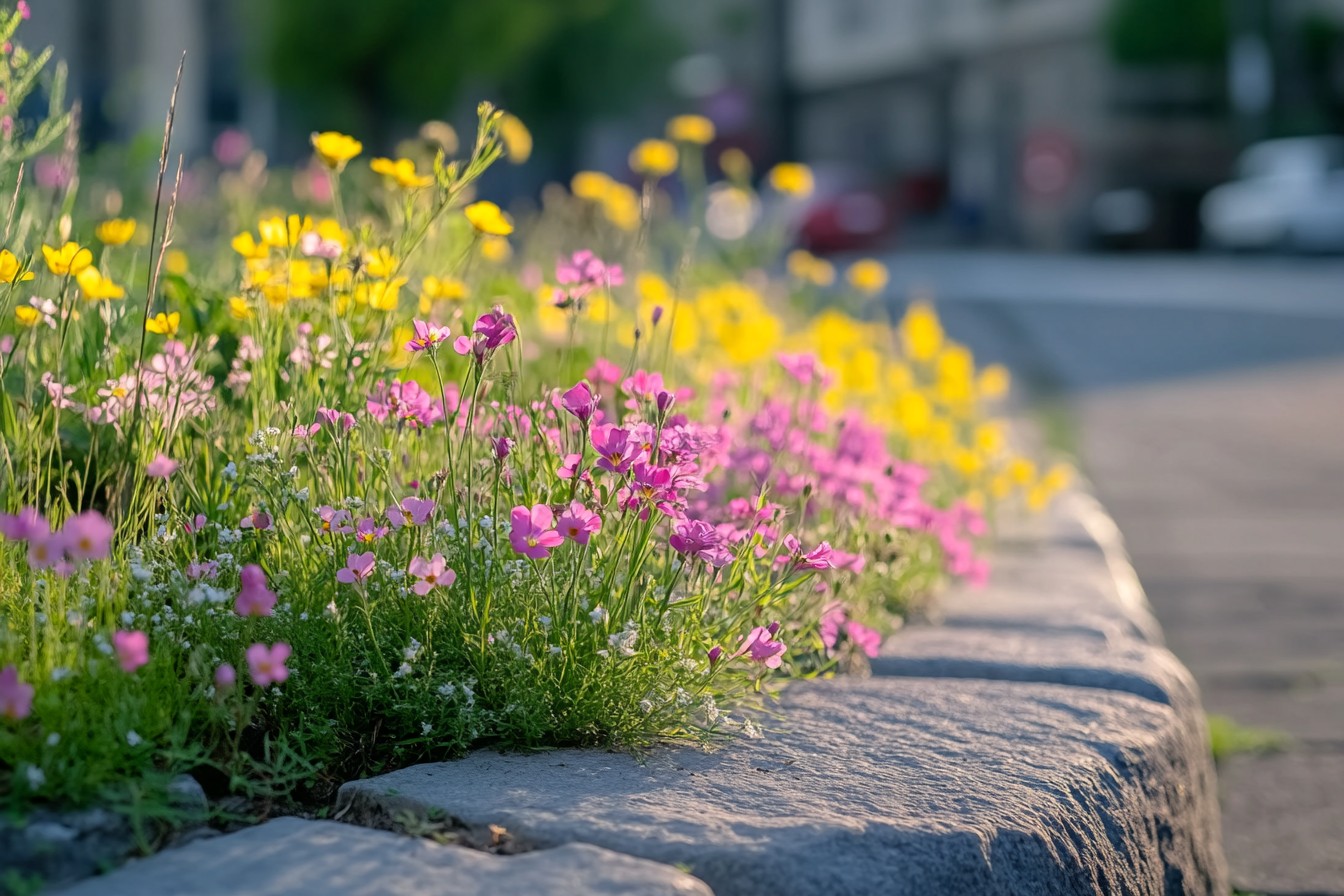I never set out to become an accessibility advocate. Five years ago, I just wanted a place to grow tomatoes that got more than the three pathetic hours of sunlight my north-facing apartment balcony received. That’s how I ended up at the inaugural meeting for the Parkside Community Garden, squeezed into a too-small chair in the basement of the local library along with twenty-three other dirt-obsessed residents of our Chicago neighborhood.
I was there for the soil. I stayed because of Gloria. Gloria rolled into that first meeting fifteen minutes late, her wheelchair barely fitting through the narrow rows of chairs.
She was in her seventies, wore a spectacular purple hat, and announced to the room: “Well, I suppose you’re all planning raised beds I won’t be able to reach and paths I can’t roll through.” The room went quiet. Then Gloria smiled and added, “Lucky for you, I taught universal design at the university for thirty years before retiring. So, who’s taking notes?”
That moment changed everything about our community garden plans.
What had started as a straightforward “let’s divvy up some plots and grow stuff” project transformed into something much more meaningful—and, I’ll admit, much more complicated. But as Gloria would remind us countless times during the process, “Accessibility isn’t an add-on feature, it’s the foundation.”
Our site was a vacant lot on Elmwood Avenue that had once been an auto repair shop. The city had reclaimed it for tax delinquency, and after sitting empty for eleven years, they’d agreed to lease it to our community group for a dollar per year.
It wasn’t much to look at—compacted soil of questionable quality, remnants of concrete foundation around the edges, and a stubborn colony of urban weeds that had claimed the northwest corner as their fortress. But it had full sun, a water hookup, and potential. Our planning committee consisted of me, Gloria, a landscape architecture student named Miguel, a retired engineer called Howard, and Saanvi, who ran the Indian grocery store down the block.
We spent the first month just listening—to each other, to other community members, to experts we brought in. The vision of an inclusive space grew from those conversations. Physical accessibility was our starting point.
The traditional community garden model—individual ground-level plots separated by narrow dirt paths—wouldn’t work for wheelchair users, elderly gardeners with mobility issues, or people with back problems. Our first decision was to make raised beds the standard, not the exception. But that led to questions: How high?
How wide? What materials? Gloria brought in her old teaching models and showed us the optimal heights for different users.
We settled on a mix—some beds at 24 inches high (accessible from a seated position), others at 32 inches (no bending required for standing adults), and some traditional ground-level plots for those who preferred them or wanted larger growing spaces. Every raised bed would have a 12-inch “toe kick” space underneath to allow wheelchairs to get close without bumping. The pathways between beds became another intensive discussion.
They needed to be at least 48 inches wide to allow wheelchair users to turn around, with a firm, level surface that wouldn’t get muddy or develop ruts. But we also wanted something permeable that would allow rainwater to soak through rather than run off. We eventually settled on decomposed granite—not the cheapest option, but one that balanced accessibility with environmental concerns.
As we moved from planning to fundraising to implementation, our community involvement grew. That’s when the project evolved from merely physically accessible to truly inclusive in the broader sense. One Friday evening, I was marking out the pathways with string when Mrs.
Chen from the apartment building across the street approached me. Through her granddaughter, who was translating, she explained that many older Chinese residents were interested in garden plots but were hesitant to attend meetings conducted only in English. That conversation led to one of our most important additions: multilingual signage and documentation.
We created garden maps, rules, planting guides, and event announcements in English, Spanish, Chinese, and Hindi—the four most common languages in our neighborhood. Saanvi and Mrs. Chen’s granddaughter helped with translations, and local high school students created weatherproof signs.
The impact was immediate—at our next meeting, attendance doubled, with many older immigrant residents participating for the first time. The multilingual approach sparked another insight: why not honor the cultural diversity of our neighborhood in the garden itself? We designated a section of shared plots as “Cultural Heritage Gardens,” where people could grow traditional crops from their cultural backgrounds and share knowledge with neighbors.
Mrs. Chen organized a Chinese medicinal herb garden. Saanvi’s mother installed a plot of Indian vegetables rarely found in Chicago markets.
The Rodriguez family created a milpa, a traditional Mesoamerican polyculture of corn, beans, and squash. These heritage gardens became educational spaces, with small signs explaining the plants and their uses. Garden workdays transformed into impromptu cooking demonstrations as gardeners shared how to prepare unfamiliar vegetables.
I learned that the bitter melon I’d always avoided is actually delicious when prepared with black beans and garlic, courtesy of Mrs. Chen’s patient instruction. Intergenerational connection emerged as another unexpected focus.
We partnered with the senior center down the block and the elementary school three blocks away to create a “Buddy Garden” program, pairing seniors with young students. Each pair shared a plot and the responsibilities of tending it, with the seniors contributing experience and the kids providing energy and strong backs. Howard, our retired engineer, transformed from a quiet committee member to an enthusiastic coordinator, creating detailed schedules and sending weekly reminder emails with excessive use of exclamation points.
My favorite intergenerational project was the “Victory Garden” led by 94-year-old Walter, who’d grown up tending a World War II victory garden with his mother. He worked with a group of middle schoolers to recreate it, complete with period-appropriate varieties and techniques. The kids were simultaneously grossed out and fascinated by his demonstrations of pest control methods from the 1940s.
(“You just picked the bugs off and squished ’em with your fingers. No fancy sprays!”) Walter, who had rarely left his apartment since his wife died, now had somewhere to be three days a week. The garden’s physical features continued to evolve based on community feedback.
We added sensory elements for gardeners with visual impairments—strongly scented herbs planted along pathways, wind chimes to provide orientation cues, and textured markers at bed corners. For those with cognitive disabilities, we created simple picture-based instructions and color-coded tool storage. Tool accessibility became its own project.
Howard, revealing himself to be quite the inventor, modified standard garden tools with extended handles, ergonomic grips, and alternative designs. His crowning achievement was a wheeled gardening stool with attached tool rack that could be positioned at various heights—the “Garden Chariot,” as Walter named it. Howard made six of them from repurposed materials, and they became so popular we started a waiting list to use them.
The garden shed itself was designed with a wide doorway, a ramp instead of steps, and a pulley system that allowed tools stored on high hooks to be lowered to accessible heights. Inside, we installed adjustable-height potting benches and a custom seed-starting station that could accommodate seated or standing gardeners. Our watering system highlighted the principle that accessibility benefits everyone.
Rather than expecting gardeners to haul heavy watering cans or manage unwieldy hoses, we installed a drip irrigation system with simple, clear controls. Each bed had its own valve, operable with minimal hand strength. During a particularly brutal July heatwave, this system saved not just labor but likely our entire harvest, as many gardeners would have been unable to visit during the dangerous temperatures.
Funding all these specialized features was challenging. Our initial budget, based on the typical community garden model, covered only basic beds, soil, and a simple shed. The accessibility features added significant costs.
We cobbled together funding from multiple sources—a city accessibility grant, donations from local businesses, a crowdfunding campaign, and a surprisingly generous contribution from my former boss who’d taken up gardening after retirement and became enthusiastic about our mission. Not everything worked as planned. Our first iteration of decomposed granite paths compacted too much during heavy rains, creating drainage problems.
The custom tool adaptations needed frequent repairs. Some raised beds warped after the first winter. We had to adjust, rebuild, and sometimes completely rethink certain elements.
Gloria reminded us that this was normal—”Universal design is iterative, not declarative,” she’d say, sounding exactly like the professor she had been. Four growing seasons later, the Parkside Community Garden has become something none of us envisioned at that first library meeting. We have 42 individual plots and 8 communal growing areas, tended by more than 70 regular gardeners ranging in age from 4 to 94.
The waiting list for plots grows each year, but we prioritize neighborhood residents and maintain at least 30% of spaces for low-income gardeners (with fees subsidized by our annual plant sale). Crop yields have been impressive—last year, we donated over 800 pounds of produce to the local food pantry from just the communal giving beds. Individual plot harvests have helped many families supplement their groceries, with several reporting significant savings on their food bills during growing season.
But the garden’s true harvest isn’t measured in pounds of tomatoes or dollars saved. It’s measured in relationships formed across cultural and generational lines. It’s in the knowledge exchanged—Mrs.
Chen teaching me to prune tomatoes using techniques passed down through her family, while I showed her how to use Google Earth to view the garden’s progress from above. It’s in watching Walter, who initially refused help from “those dang teenagers,” now arriving early to prepare snacks for his middle school gardening team. The most unexpected outcome has been the garden’s influence beyond its fences.
Two other community gardens in Chicago have adopted our multilingual approach. A suburban school consulted with us on accessible gardens for their special education program. Local hardware stores now stock modified tools similar to Howard’s designs.
Gloria was invited to speak at a citywide gardening conference about community inclusion, bringing Howard along to demonstrate the Garden Chariot. I still have my plot of tomato plants—that much hasn’t changed. But now I grow them alongside neighbors I would never have met otherwise, in a space that demonstrates what’s possible when we design with everyone in mind from the beginning.
Last week, I overheard a visitor asking Gloria if it had been difficult to make the garden so accessible. She smiled and said something I’ve been thinking about ever since: “It wasn’t easy, but it would have been much harder to exclude people and then try to justify why.”
As we begin planning an expansion into the adjacent lot (recently acquired after two years of negotiation with the city), we’re carrying forward what we’ve learned—not just about ramp gradients and path widths, but about the practice of listening to each other and recognizing that each person brings valuable perspective to the garden. Universal design isn’t just about physical access; it’s about creating spaces where everyone feels they belong.
So if you’re planning a community garden, start by looking around your planning table. Who’s missing? Whose voice isn’t being heard?
Garden soil can grow amazing things, but only if everyone can reach it. Trust me—Gloria wouldn’t have it any other way.

